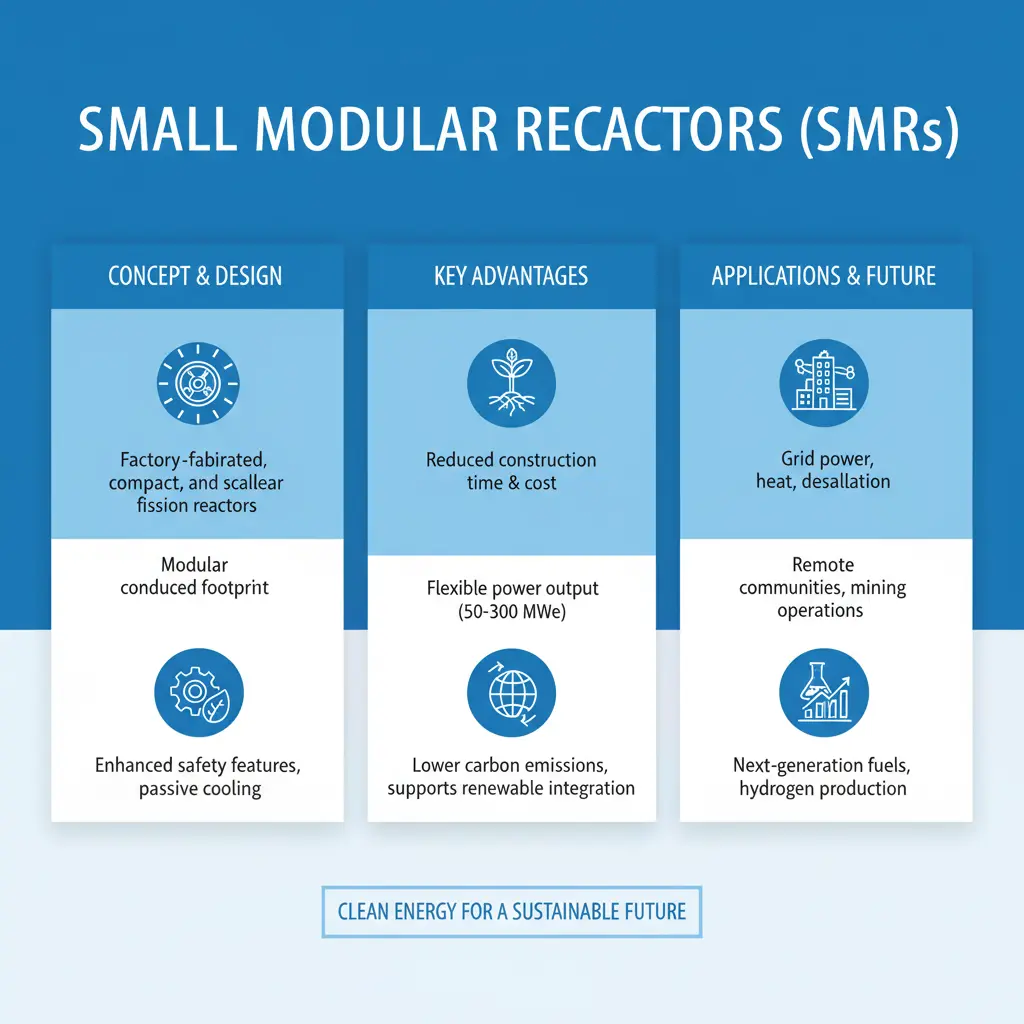September 23, 2025
SMRs: 9 Powerful Benefits for India’s AI Energy Revolution
What are Small Modular Reactors (SMRs)?
India is exploring a strategic shift toward Small Modular Reactors (SMRs) to power the booming AI data centre sector, which has seen a massive energy demand. As per the news reported on September 22, 2025, the Centre is encouraging an SMR-led nuclear push to meet the clean energy needs of this trend, already evident in the US and other countries. This move aims to address the limitations of renewable energy, with projections suggesting India’s data centre market could grow to a $10 billion valuation by 2026, up from $5.12 billion in 2024, driven by AI and cloud computing demands.
Key Points
- AI Data Centre Boom: The rapid expansion of AI applications has tripled data centre energy needs, with India’s demand rising due to global tech giants setting up facilities.
- SMR as a Solution: SMRs, with a capacity of 300 MW to 3000 MW, offer a clean, round-the-clock power source to support AI operations, overcoming renewable energy’s intermittency.
- Government Initiative: The Centre is open to exploring nuclear energy, with key expenditure heads like power consumption and infrastructure costs already under review.
- Global Context: The US and other nations are adopting SMRs, while India lags, prompting a potential policy shift to attract investment and meet future energy demands.
- Challenges Ahead: Monsoon disruptions and renewable reliance have slowed progress, necessitating a balanced approach with nuclear integration by 2030.
About Small Modular Reactors (SMRs) :
- Small Modular Reactors (SMRs): SMRs are advanced nuclear reactors designed with a power capacity ranging from less than 300 MW(e) to 3000 MW(e), significantly smaller than traditional reactors.
- They are factory-built and modular, allowing for easier transportation, installation, and scalability. In India, SMRs are being explored to meet the growing energy demands of AI data centres, offering a clean, reliable, 24/7 power source with reduced construction timelines (3-5 years vs. 10+ for conventional plants). Their compact size and enhanced safety features make them suitable for diverse locations, including remote areas.
Types of Reactors:
- Pressurized Water Reactors (PWRs): The most widely used reactors worldwide, where pressurized water serves as both the coolant and the neutron moderator. They operate at around 1500 MW(e) and are widely used in the US and Europe for stable baseload power.
- Boiling Water Reactors (BWRs): Similar to PWRs but allow water to boil in the reactor core, producing steam directly for turbines. They range from 500-1500 MW(e) and are prevalent in Japan and the US.
- Gas-Cooled Reactors (GCRs): Use carbon dioxide or helium as coolant, with graphite as a moderator. The UK’s Magnox and AGR reactors (up to 1000 MW(e)) fall here, known for high-temperature operations.
- Fast Breeder Reactors (FBRs): Use fast neutrons to produce more fissile material than they consume, ideal for resource-scarce regions. India’s prototype FBR at Kalpakkam generates 500 MW(e) and supports thorium utilization.
- Molten Salt Reactors (MSRs): Experimental reactors using molten salt as fuel and coolant, offering inherent safety and potential for 100-1000 MW(e). They are still in development globally, including in China.
September 24, 2025
September 23, 2025
September 22, 2025
September 17, 2025


